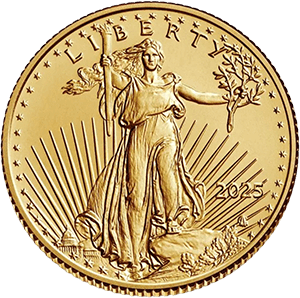
Gold has long been a symbol of wealth and stability, attracting investors, collectors, and those seeking to hedge against economic uncertainty. With its enduring value, many people wonder about the practicalities of acquiring it—specifically, if there are limits on how much gold one can purchase in a single transaction. This blog post explores the topic in depth, covering legal, financial, and logistical aspects to help you make informed decisions. We'll focus on the United States, as regulations can vary internationally, but the principles discussed here provide a solid foundation for understanding the process.
No Strict Limits on Ownership or Purchases
In the United States, there are no federal laws imposing a cap on the amount of gold an individual can own or buy. This freedom stems from historical shifts in policy. For instance, during the Great Depression, Executive Order 6102 in 1933 restricted private gold ownership to curb hoarding, but those restrictions were lifted in 1975 with the repeal of related provisions in the Gold Reserve Act. Today, you can legally acquire as much gold as your finances allow, whether in the form of bullion bars, coins, or other products.
That said, while ownership is unrestricted, certain transactions trigger reporting requirements designed to prevent money laundering and ensure tax compliance. These aren't limits per se but important considerations for large purchases.
Reporting Requirements: When and Why They Apply

One key factor influencing how much gold you might buy at once is the Bank Secrecy Act, which mandates reporting for cash transactions exceeding $10,000. If you pay with cash (including cashier's checks or money orders in some cases) for gold worth more than this amount, the dealer is required to file IRS Form 8300. This form includes details like your name, address, and Social Security number, but it's not a tax on the purchase itself—it's simply a record to track large cash flows.
To avoid this reporting, many buyers opt for non-cash payment methods such as bank wires, personal checks, or credit cards, which generally don't trigger Form 8300. For example, you could purchase $50,000 worth of gold via wire transfer without immediate reporting obligations. However, keep in mind that all gold investments are subject to capital gains taxes upon sale, regardless of how you bought them. The IRS treats gold as a collectible, with long-term gains taxed at up to 28%.
It's worth noting that these rules apply to purchases, not sales. When selling gold, different thresholds may come into play, such as Form 1099-B for certain quantities of bullion (e.g., 25 or more 1-ounce gold coins in a single transaction). Always consult a tax professional for personalized advice.
Practical Considerations Beyond the Law
Even without legal caps, real-world factors can influence how much gold you can buy in one go. Dealers often have their own policies based on inventory, risk management, and payment processing. For instance, online platforms might limit single orders to $250,000, while in-person dealers could handle up to $1 million or more, depending on availability. Banks and financial institutions may also impose daily withdrawal limits on cash or transfers, which could indirectly affect your purchase.
Storage and security are additional hurdles for large buys. Gold is dense and valuable—a single 400-ounce bar (standard for institutional trading) weighs about 27 pounds and could be worth over $1 million at current prices. Home storage poses risks like theft, so many opt for insured vaults or depositories. Transportation logistics, such as shipping insured packages, can add costs and complexity for substantial amounts.
Internationally, rules differ. In some countries, like India, there are import duties and quantity restrictions for personal use. If you're traveling with gold, U.S. Customs requires declaration of bullion or coins but imposes no duties on them. Research local laws if your purchase involves cross-border elements.
Tax and Investment Implications
Gold isn't just a commodity; it's an asset class with unique tax treatments. Purchases themselves aren't taxed (beyond sales tax in some states), but holding gold in a retirement account like an IRA can offer tax advantages. Self-directed precious metals IRAs allow you to buy gold without immediate tax implications, provided it meets purity standards (e.g., 99.5% for bars). This can be a smart way to accumulate larger amounts over time without worrying about annual reporting.
From an investment perspective, diversifying with gold can protect against inflation, but it's not without volatility. Prices fluctuate based on global demand, geopolitical events, and currency strength. Starting small and scaling up as you gain experience is often recommended for new buyers.
Tips for a Smooth Gold Purchase

To navigate large gold buys effectively:
- Research Dealers Thoroughly: Look for accreditation from bodies like the Better Business Bureau or membership in industry groups such as the Professional Numismatists Guild.
- Compare Prices: Factor in premiums over spot price, shipping, and insurance.
- Verify Purity and Authenticity: Insist on certified products from recognized mints like the U.S. Mint or Royal Canadian Mint.
- Plan Your Payment: Use traceable methods to avoid cash reporting if privacy is a concern.
- Consider Professional Advice: Financial advisors or tax experts can help align purchases with your overall portfolio.
Final Thoughts
Buying gold offers a tangible way to build wealth, and the absence of strict limits in the U.S. empowers individuals to invest according to their means and goals. By understanding reporting thresholds, practical logistics, and tax nuances, you can approach purchases confidently and responsibly. If you're ready to explore options, reputable firms like American Standard Gold provide expertise in precious metals, including IRAs and diversification strategies, ensuring a trustworthy experience for buyers at any scale.





